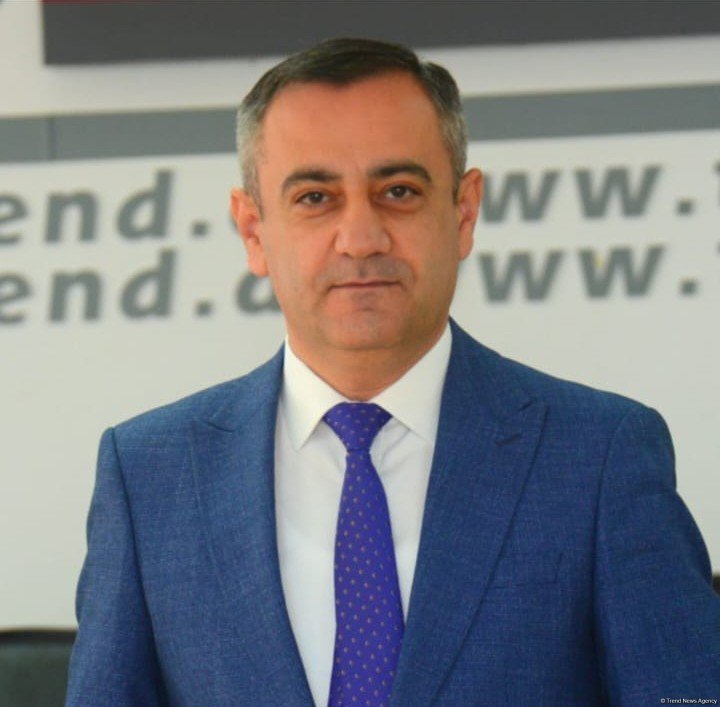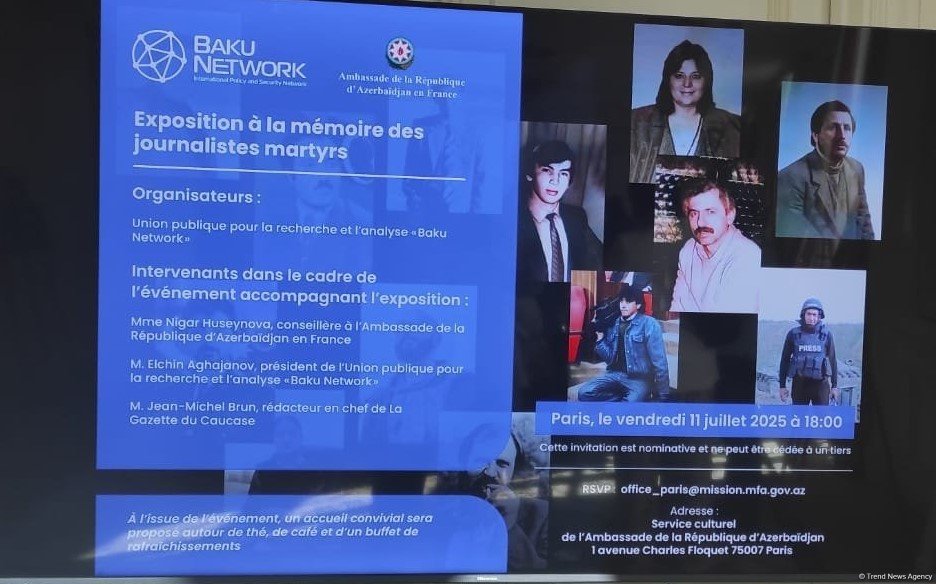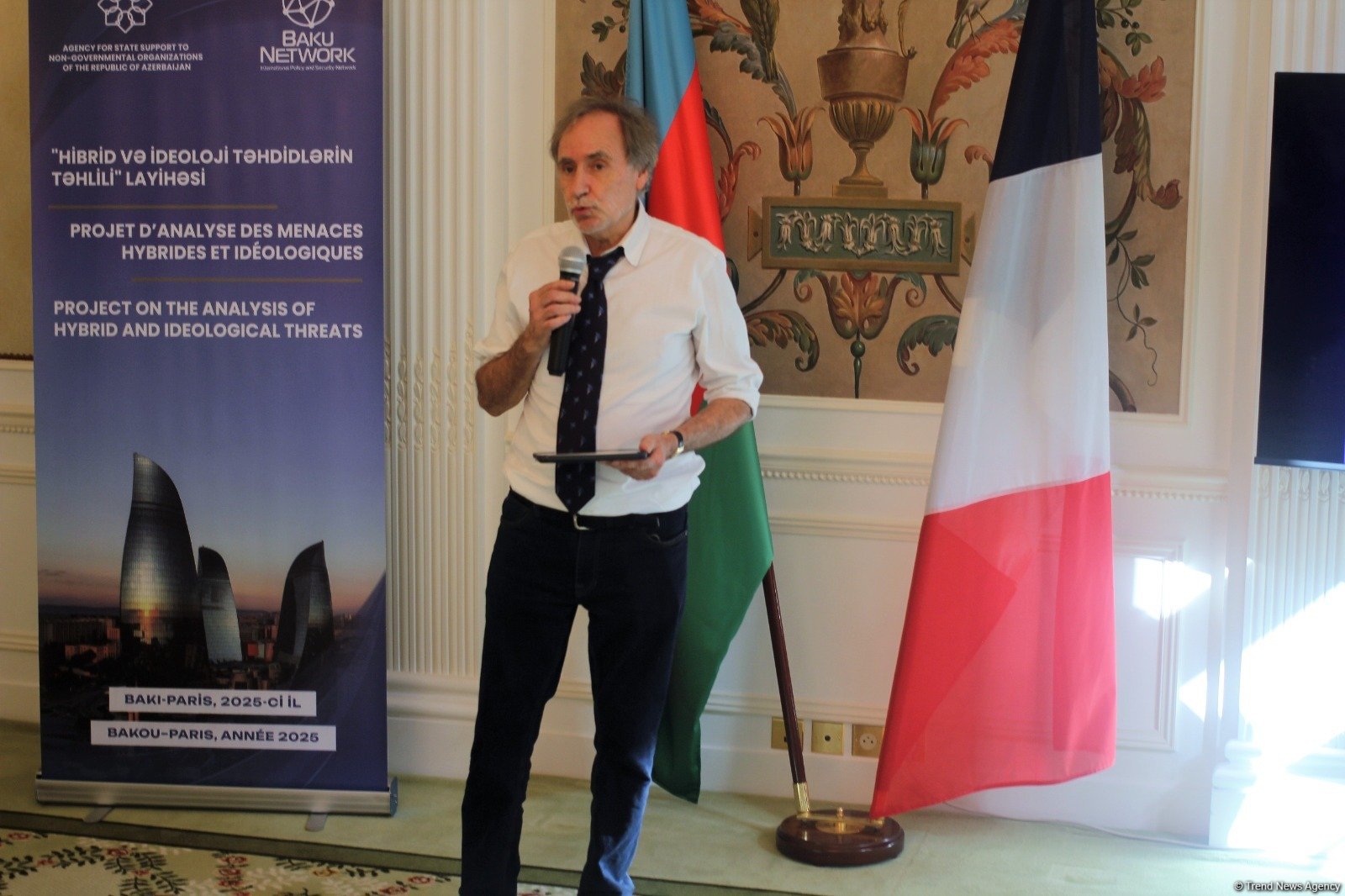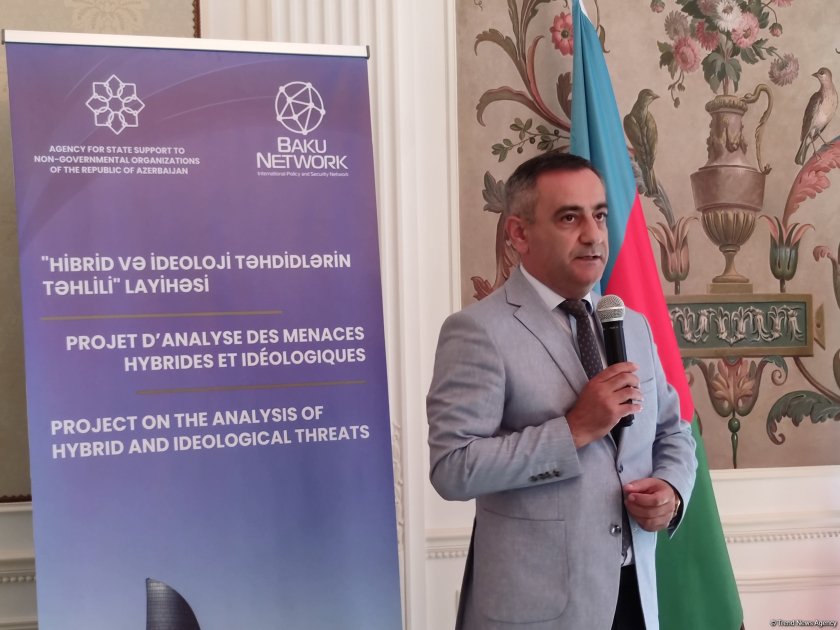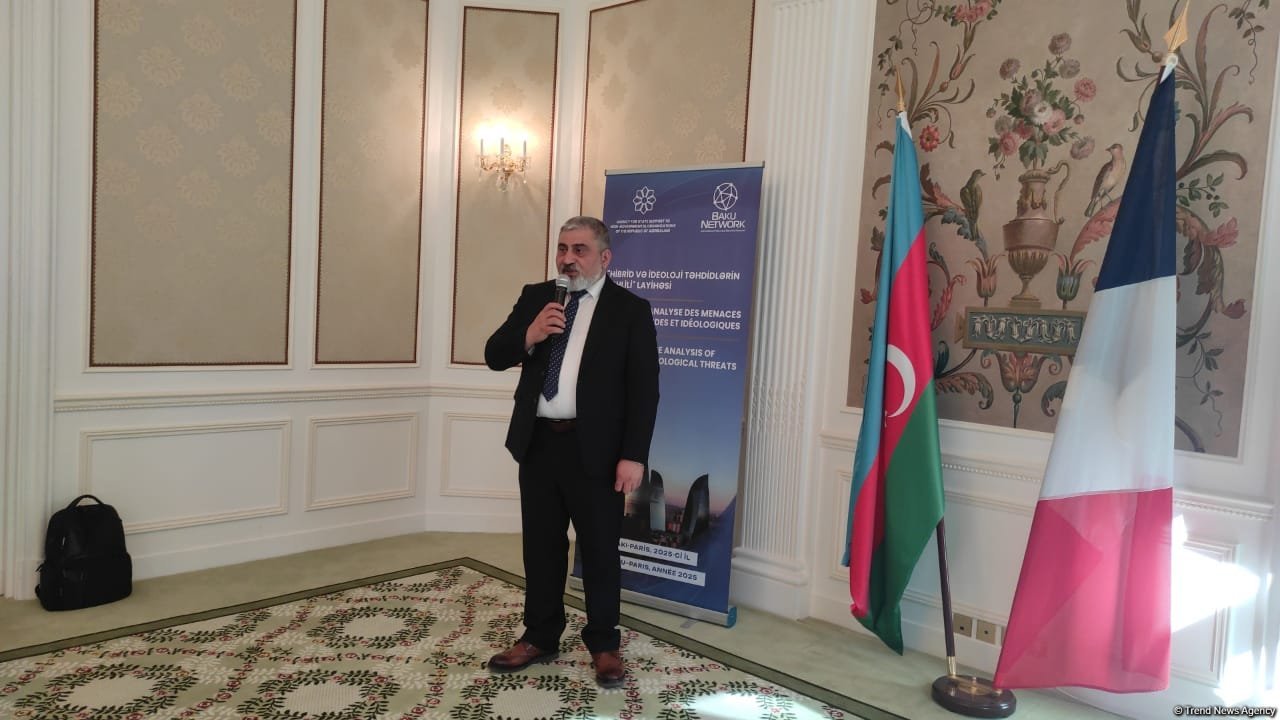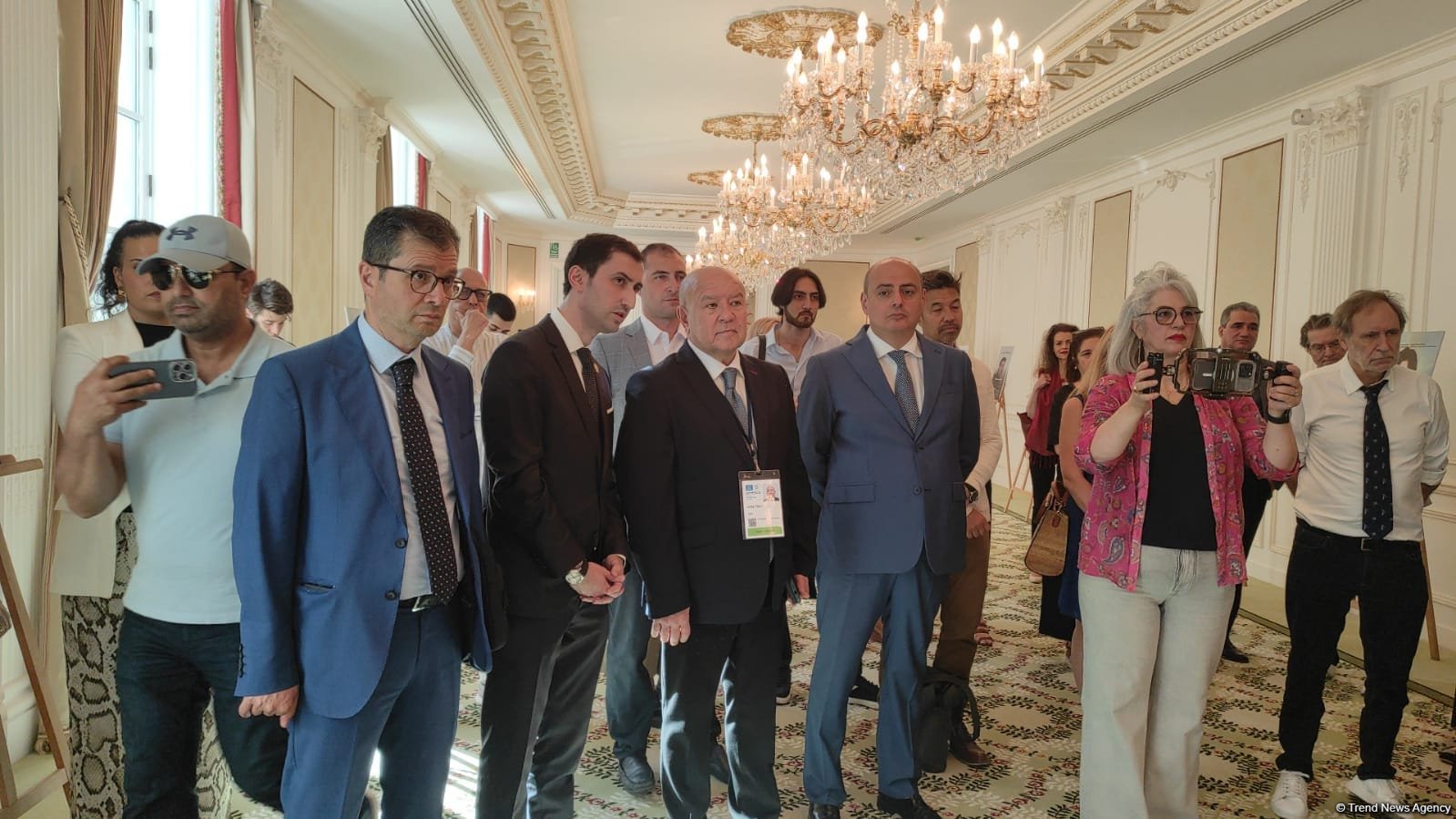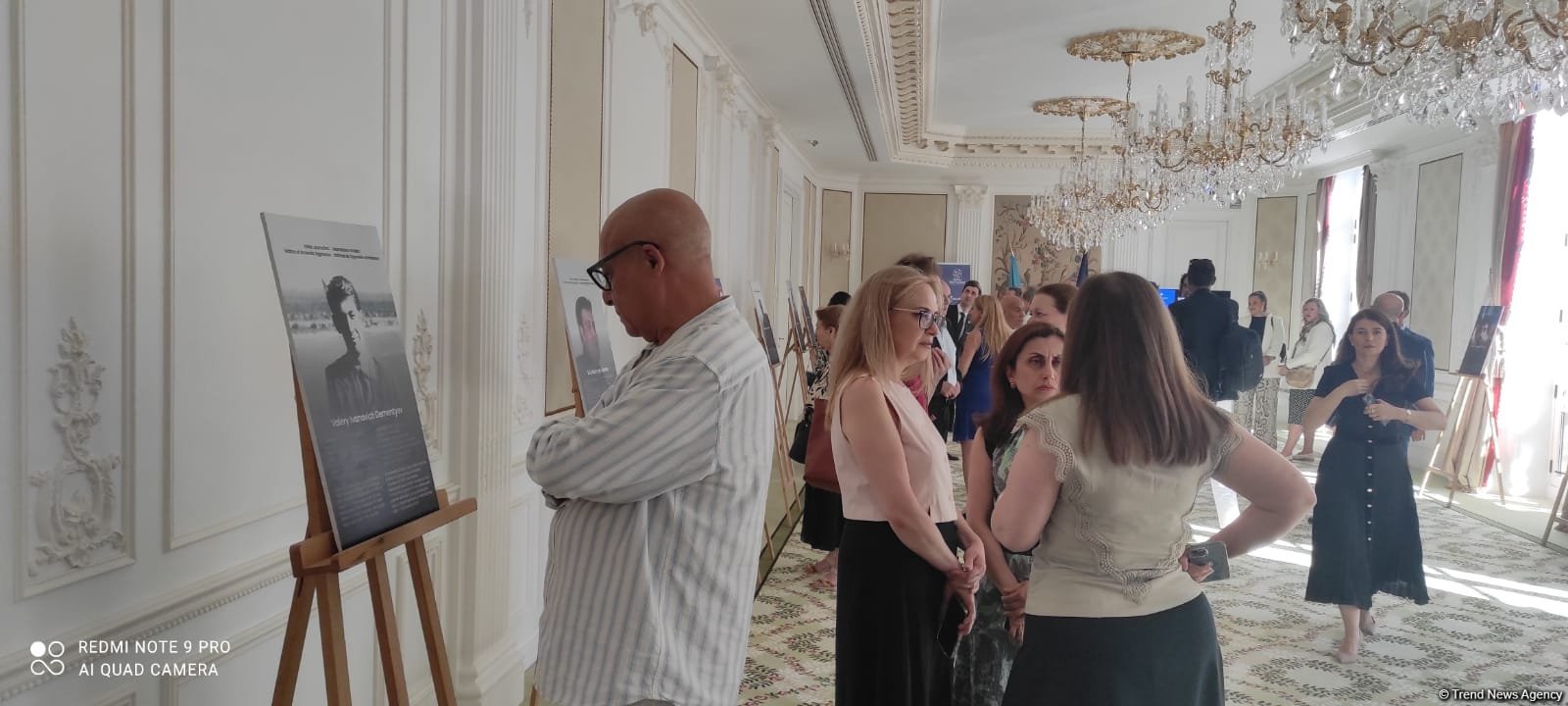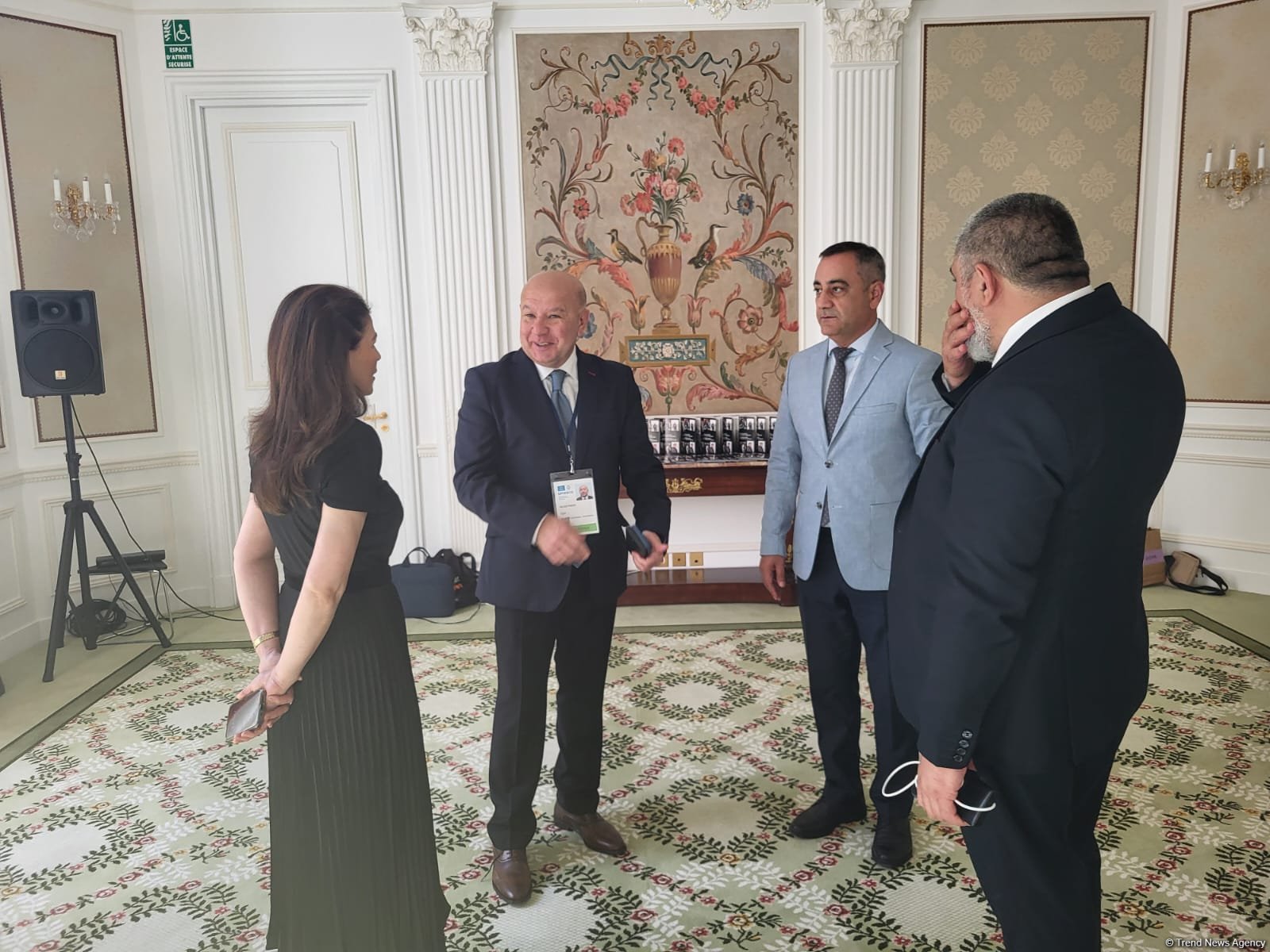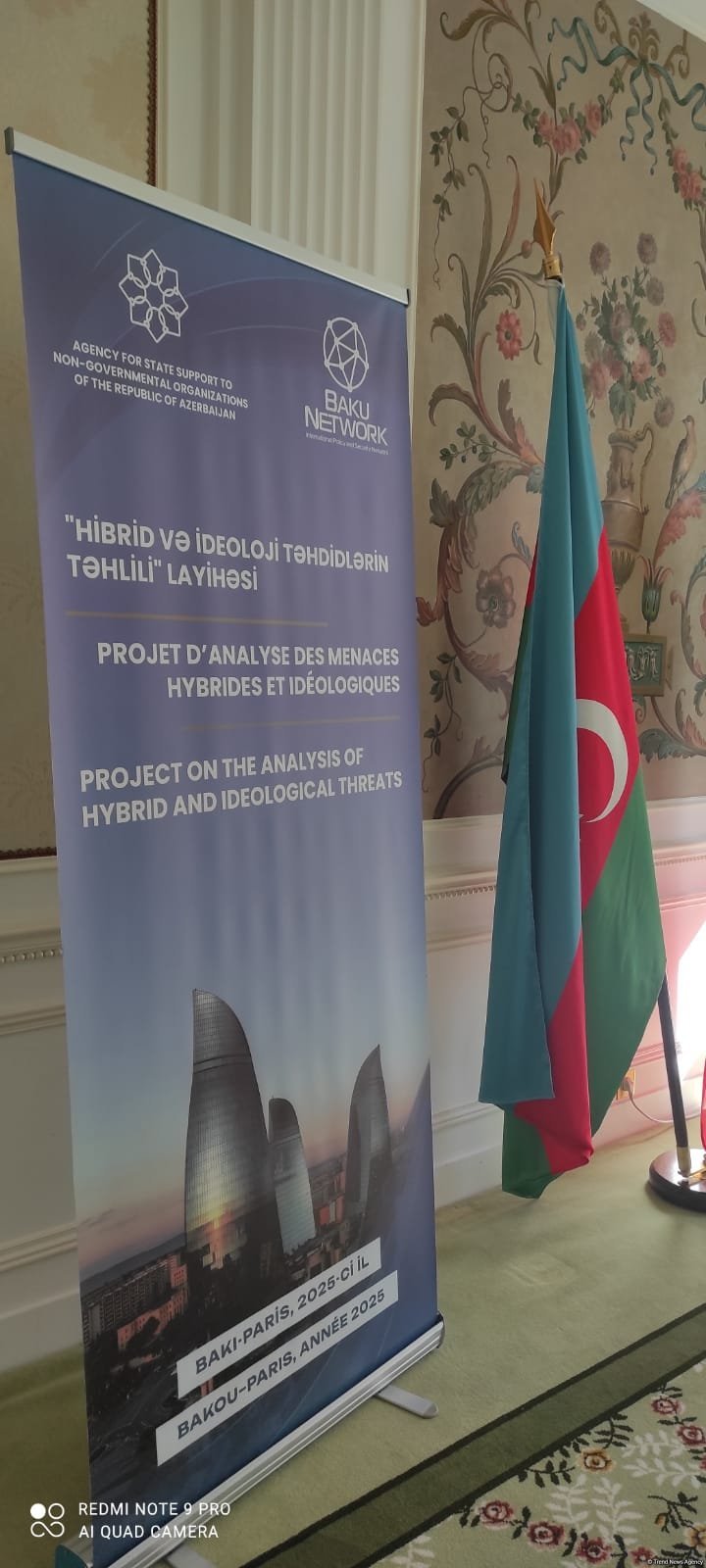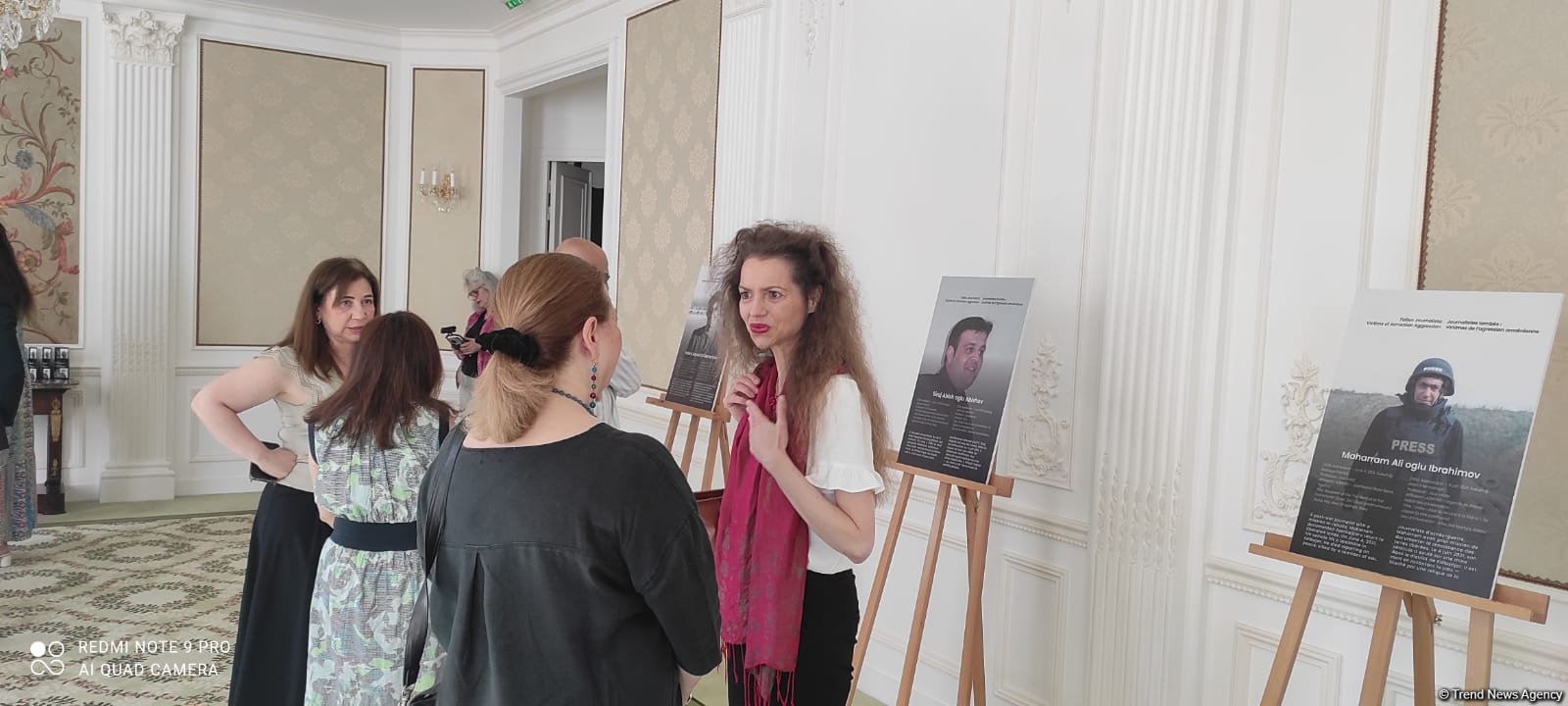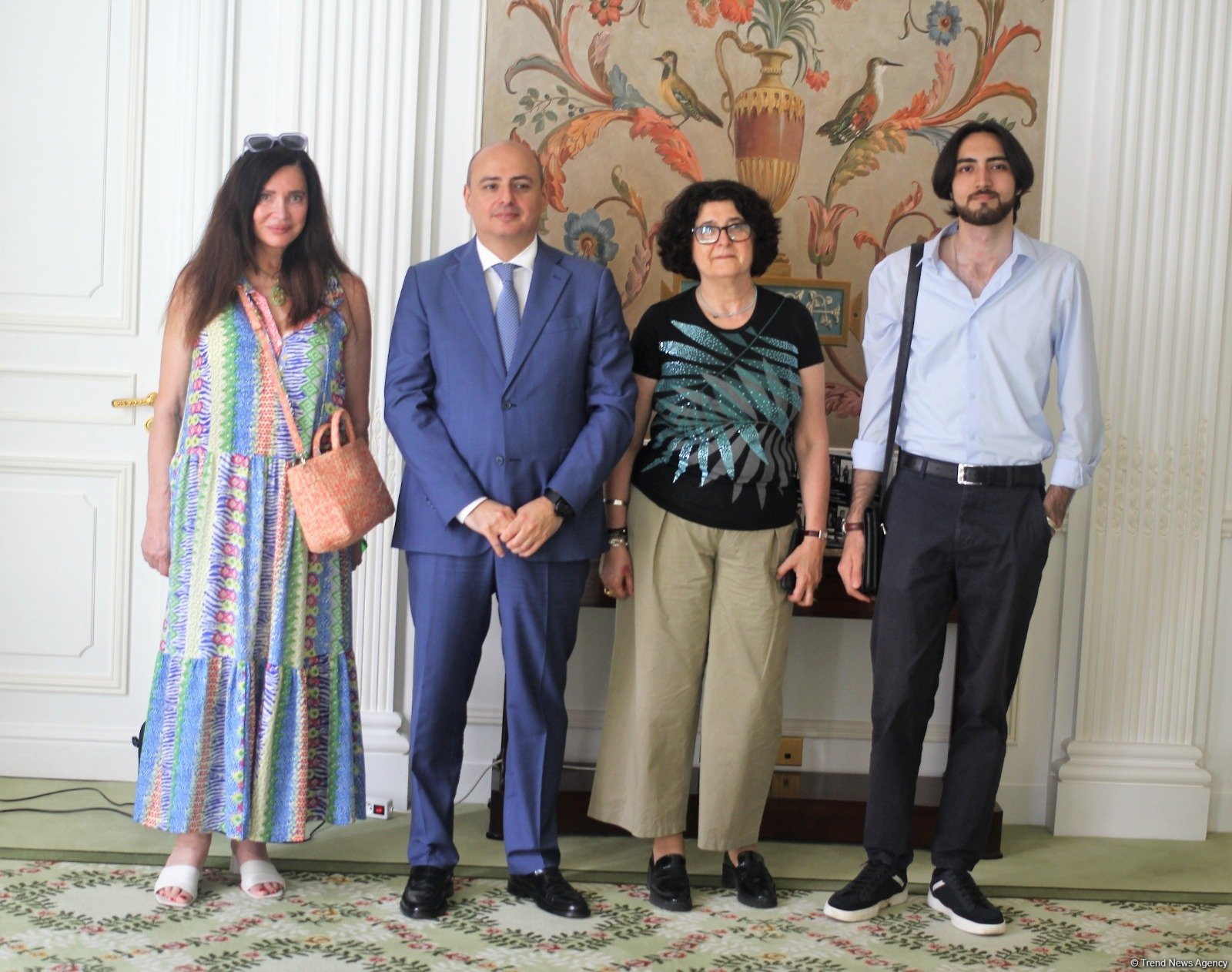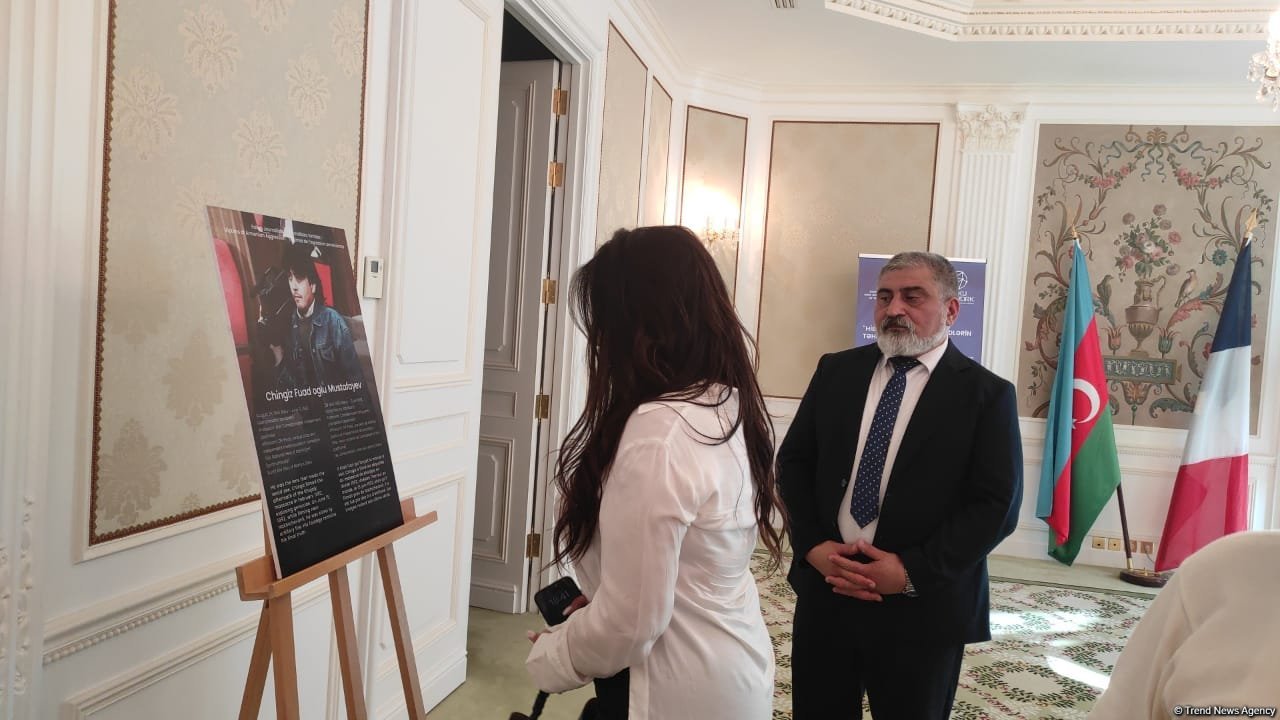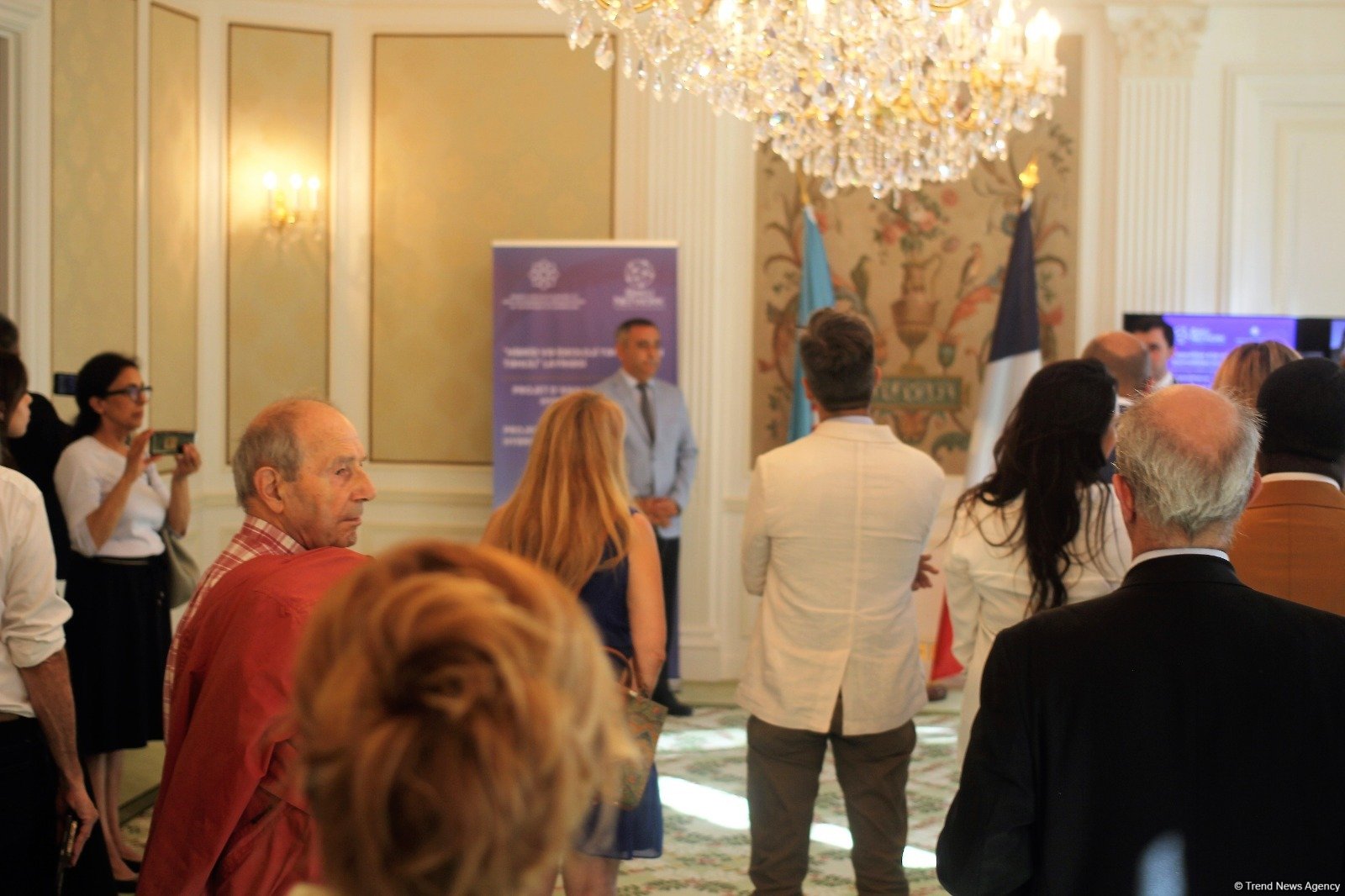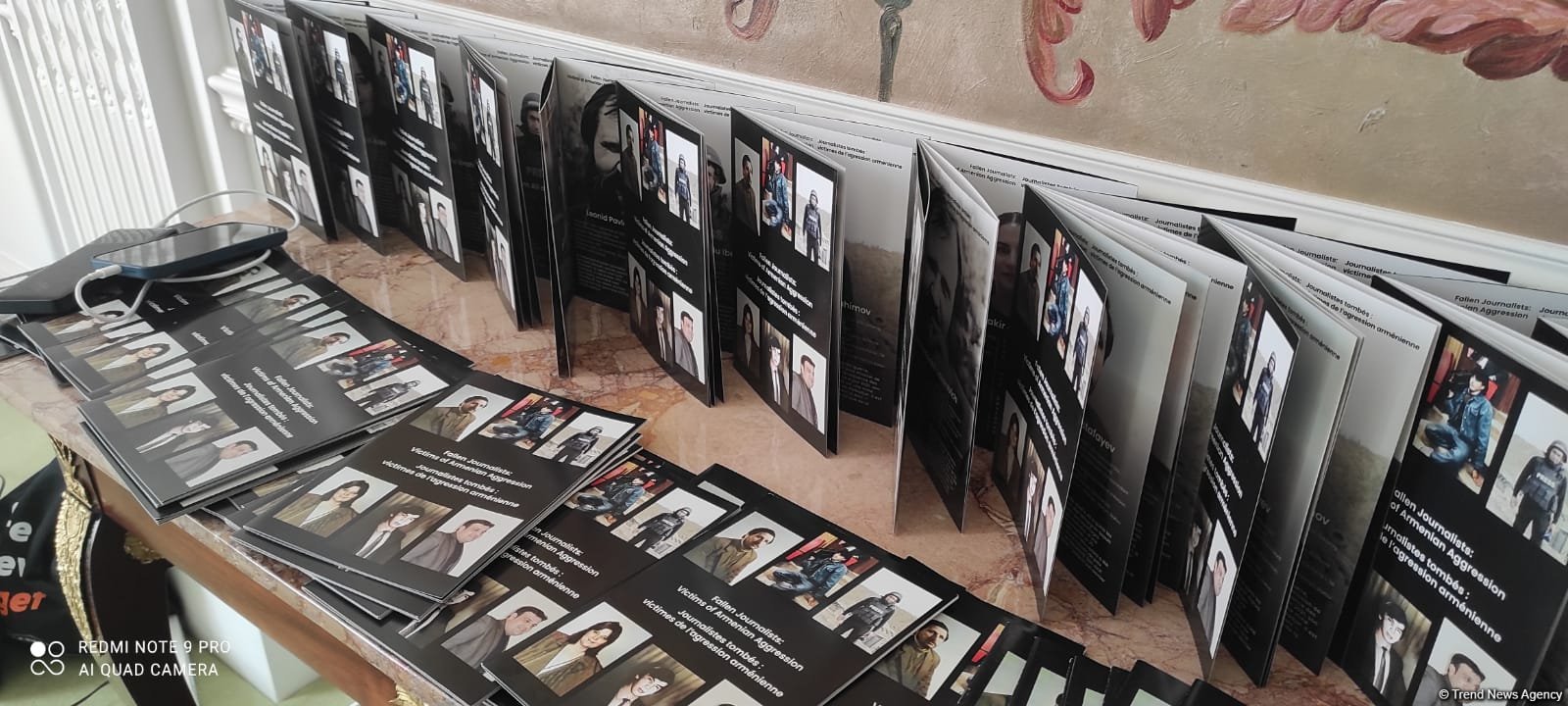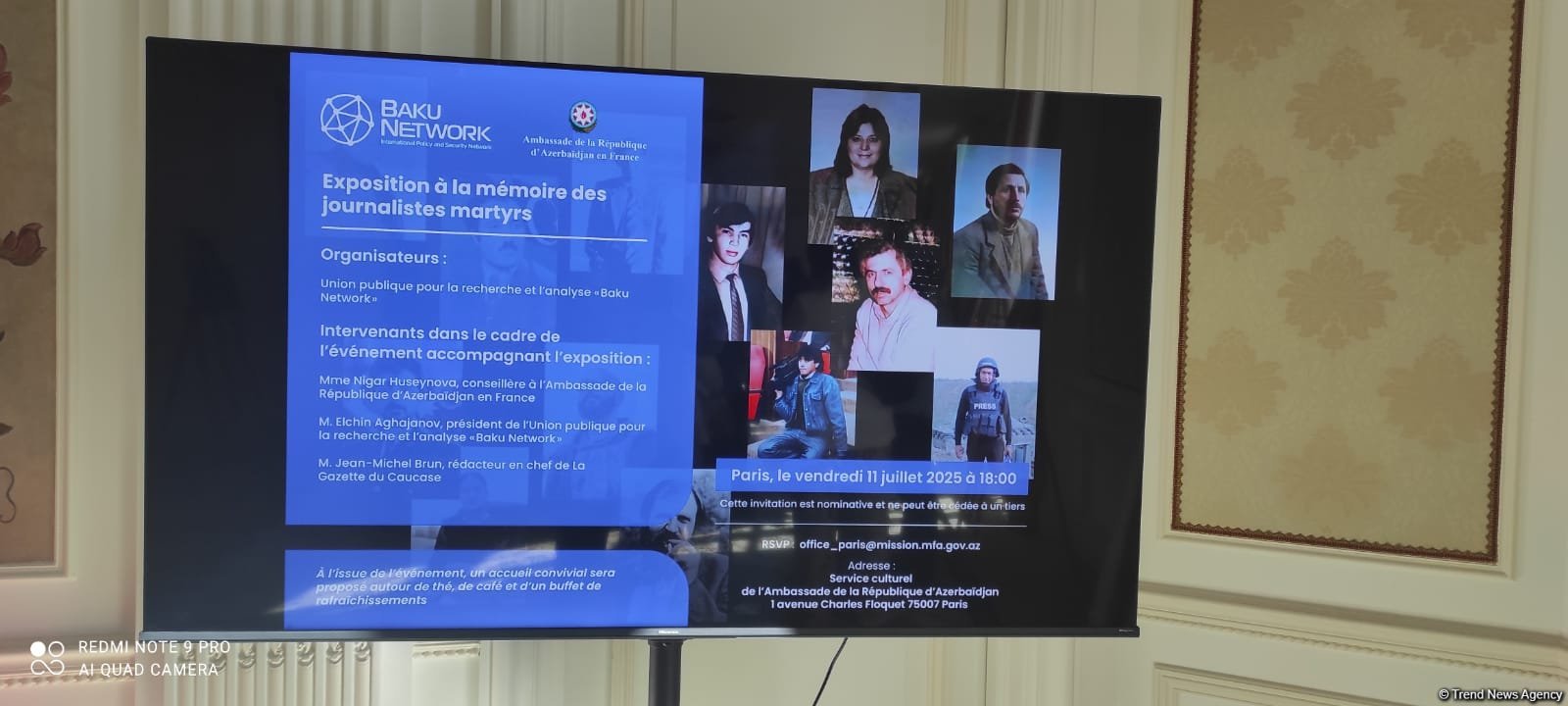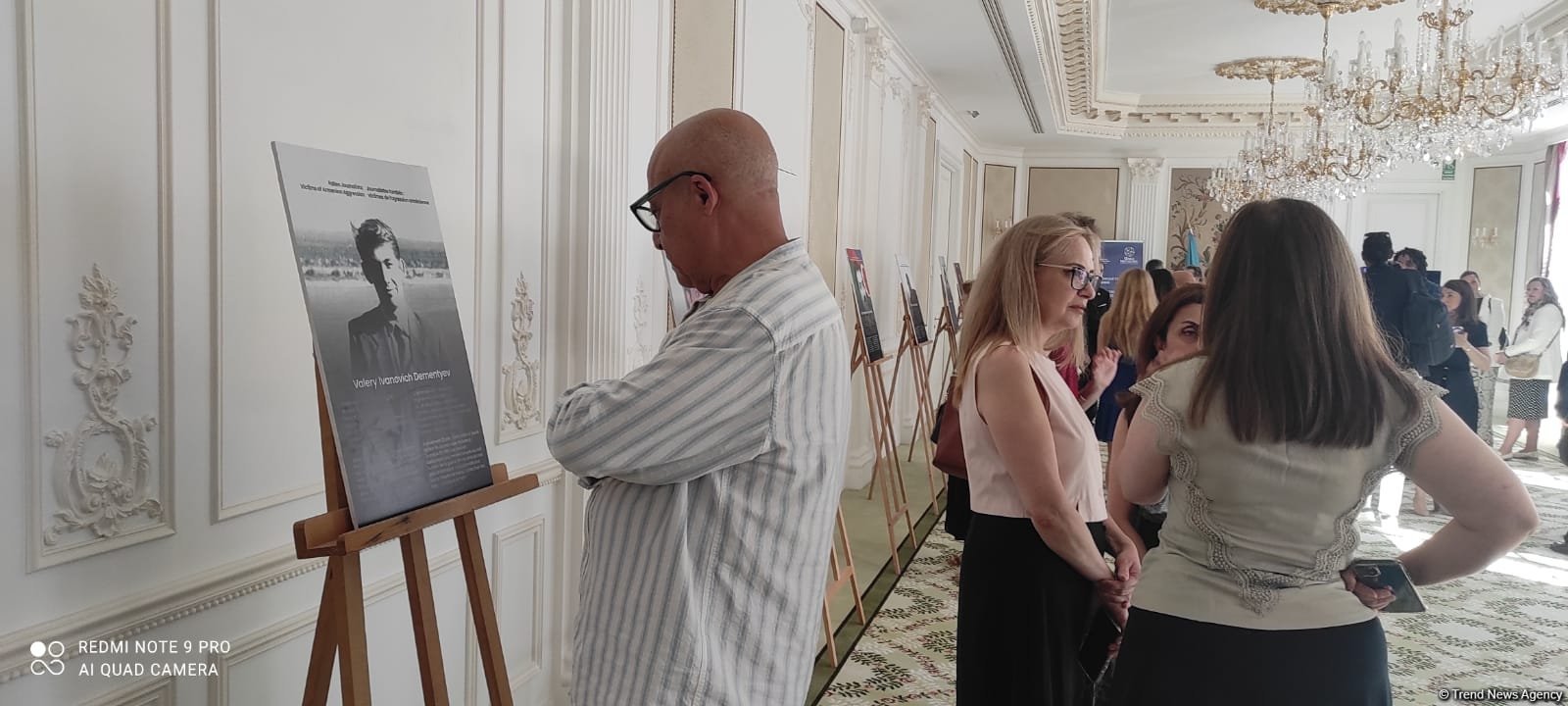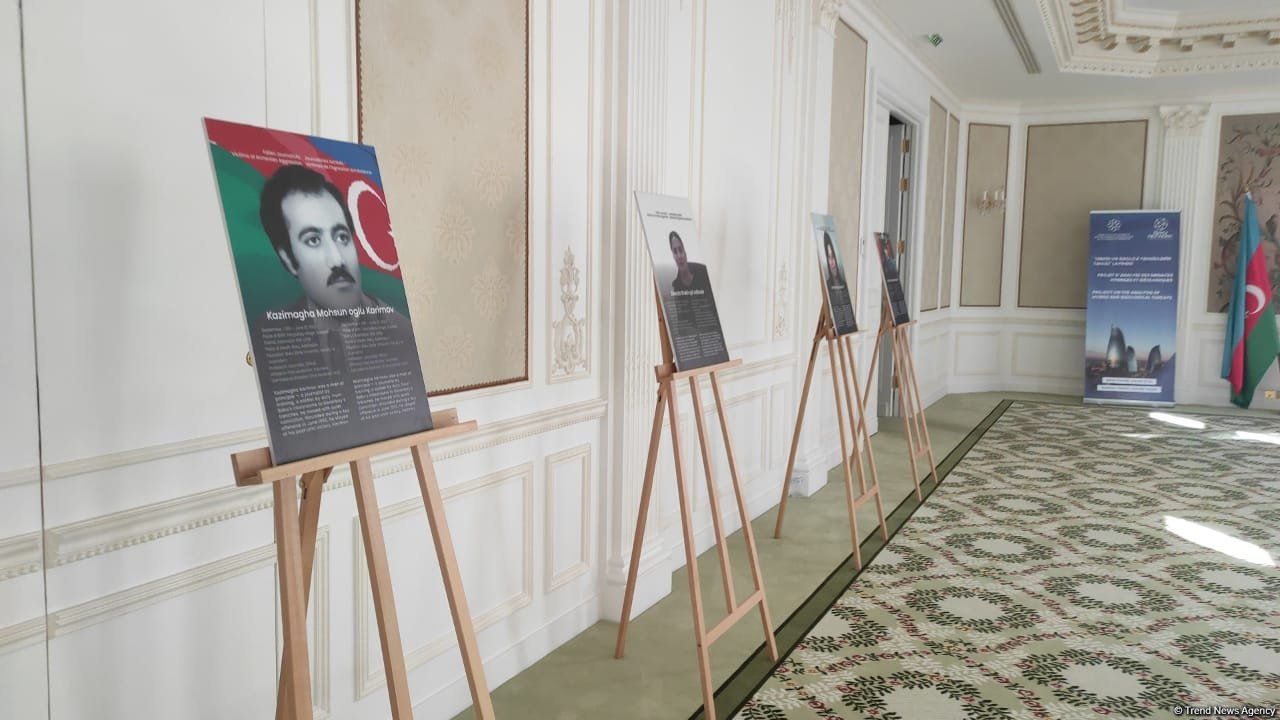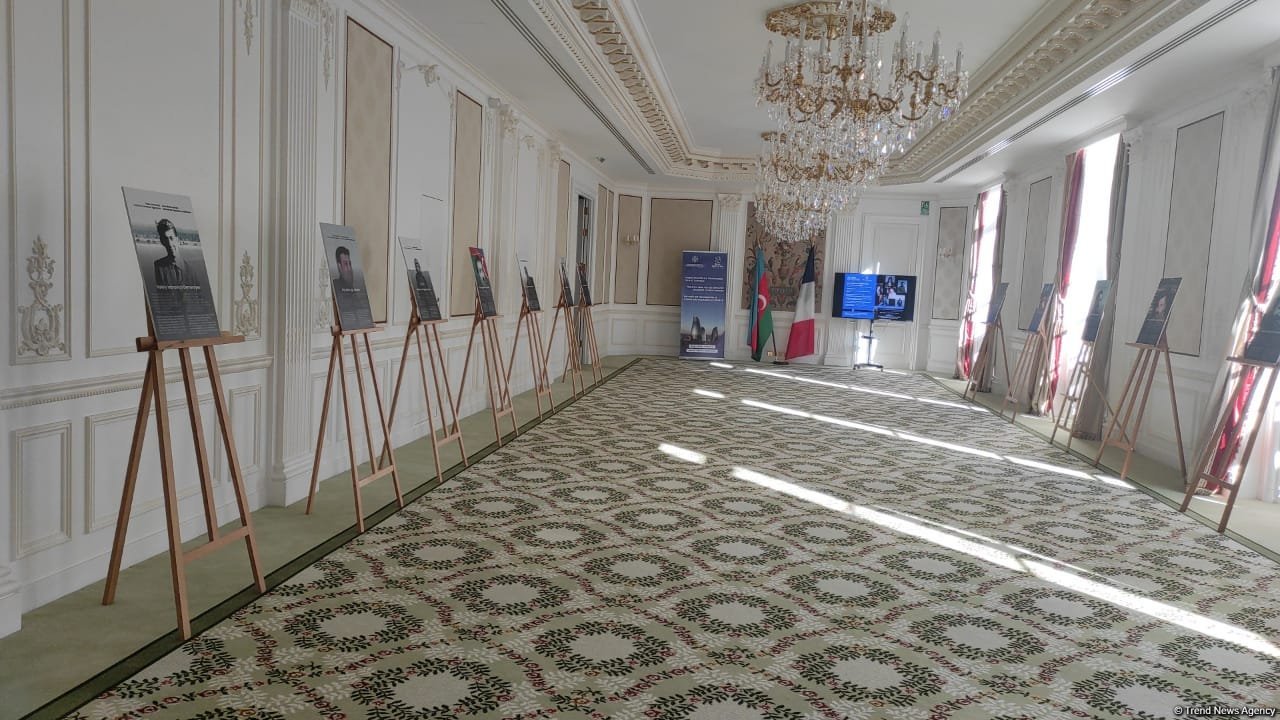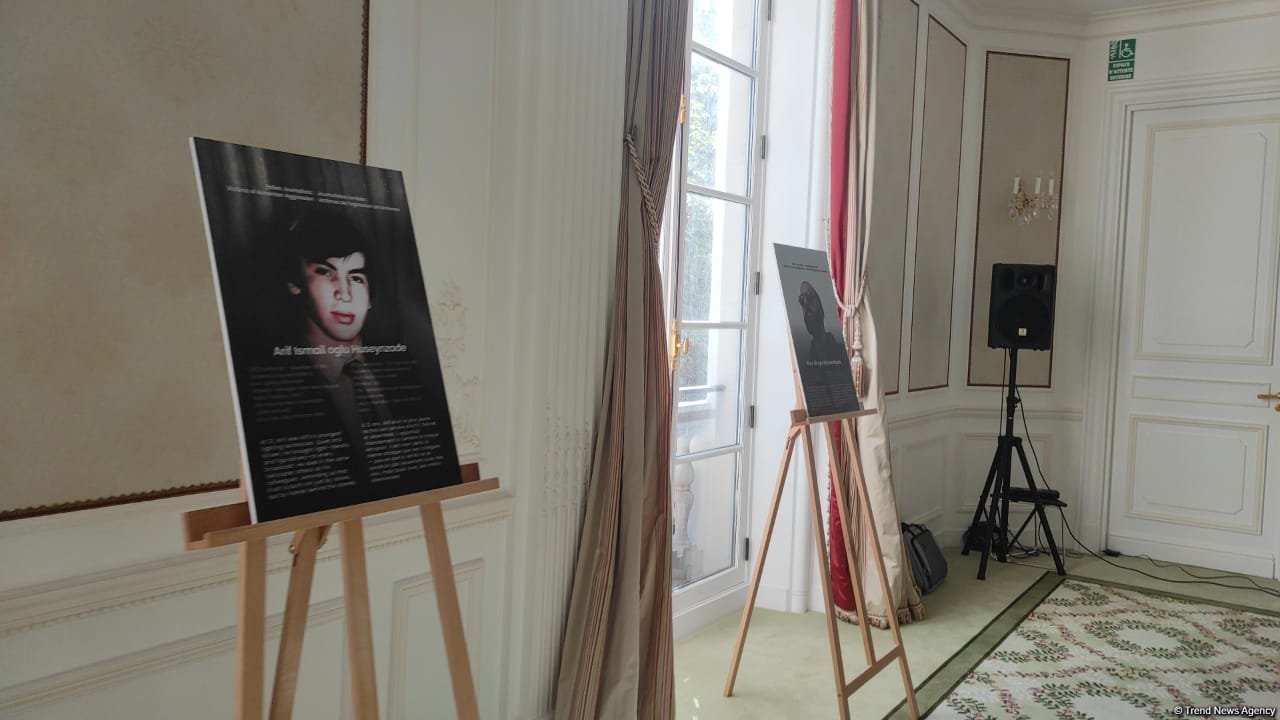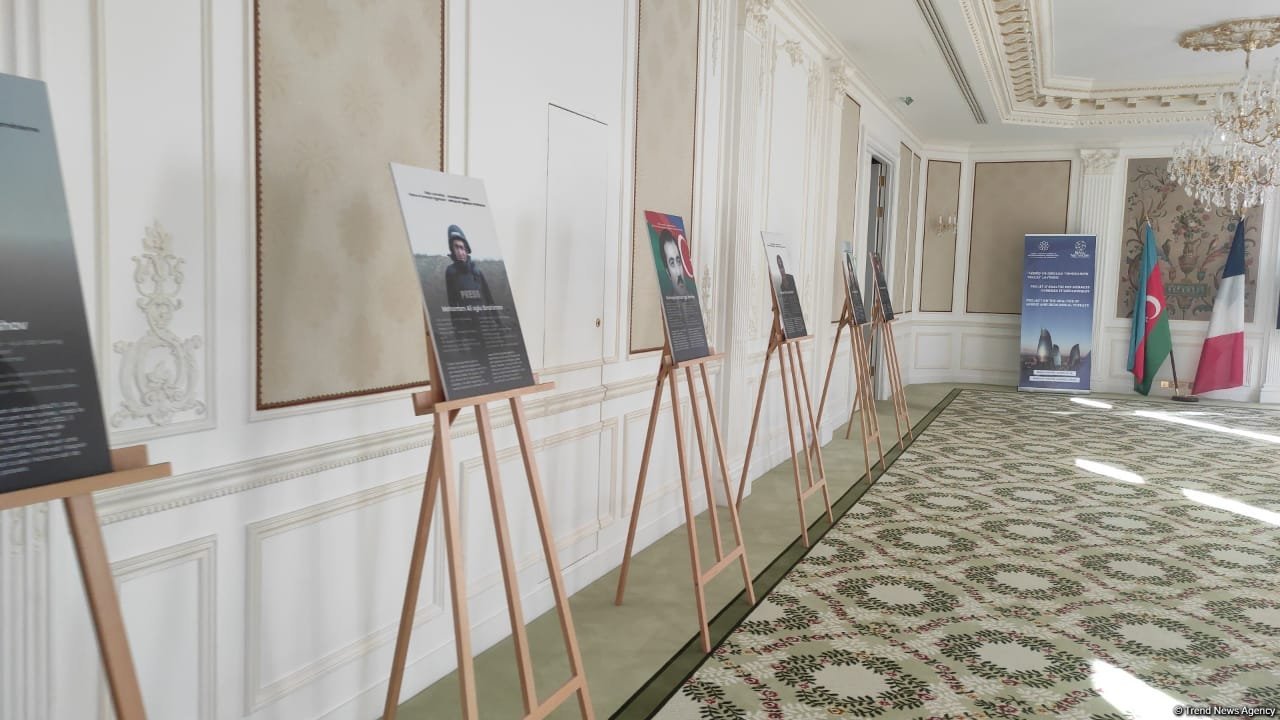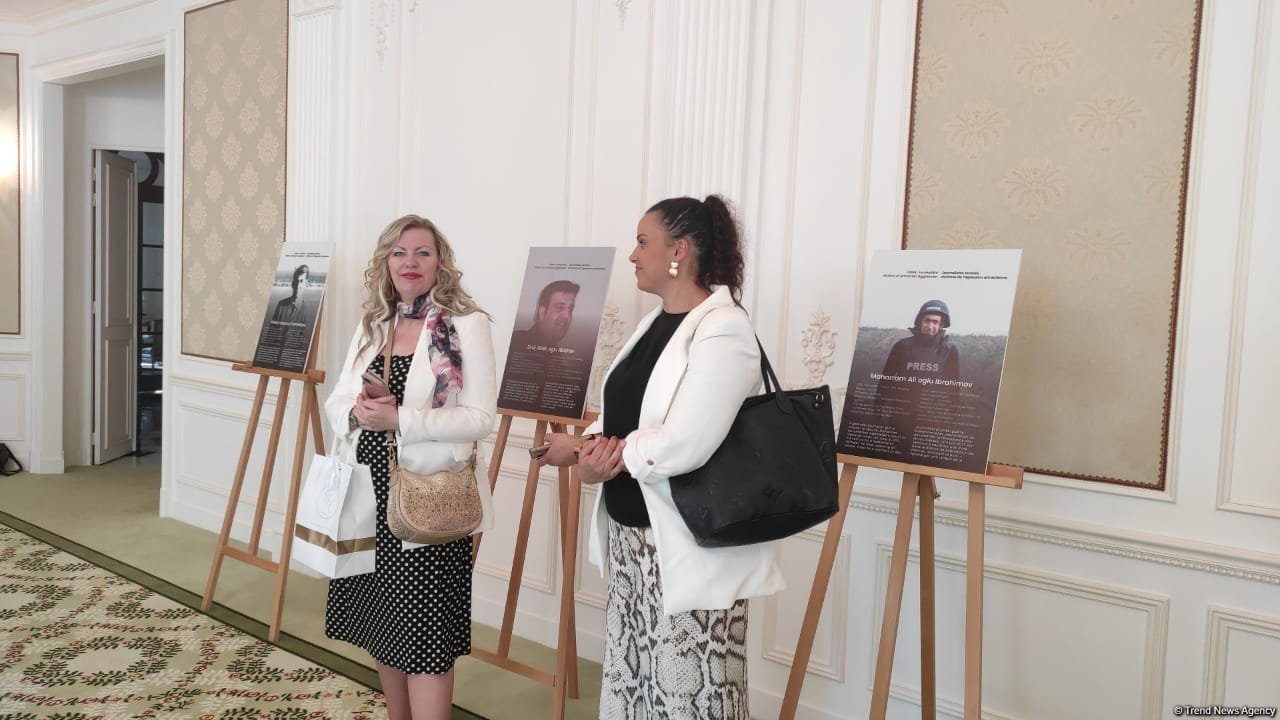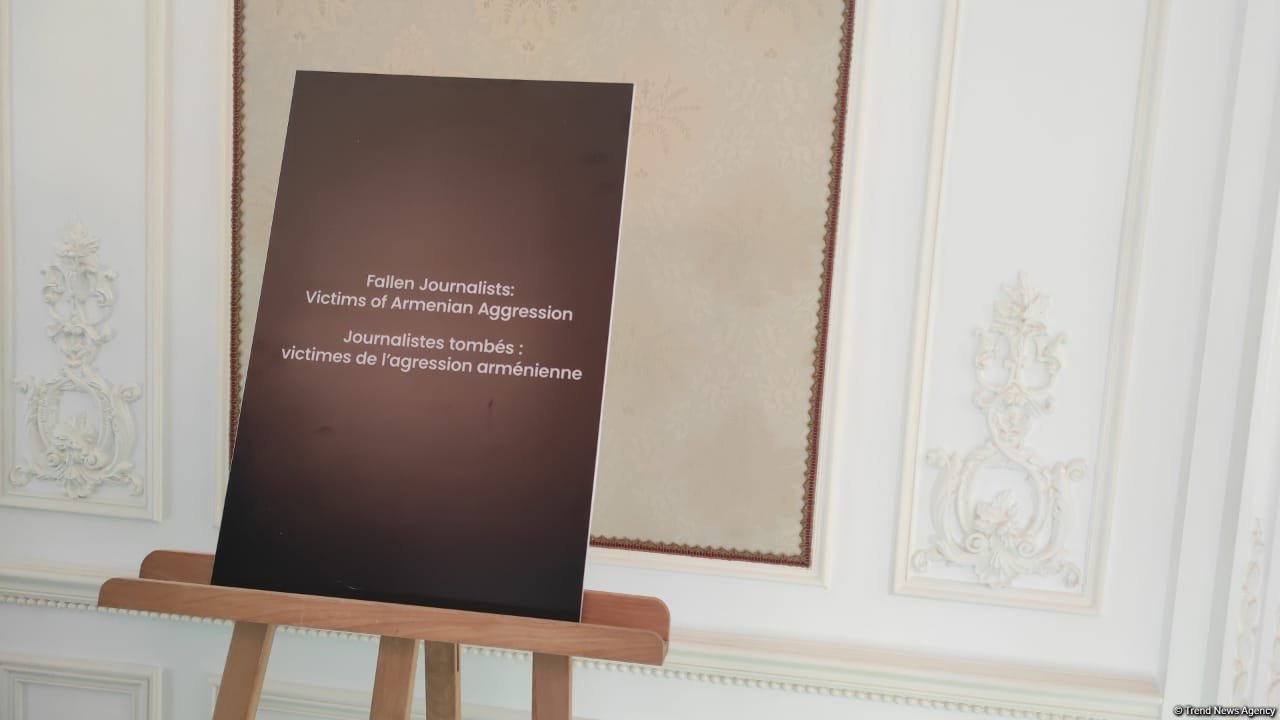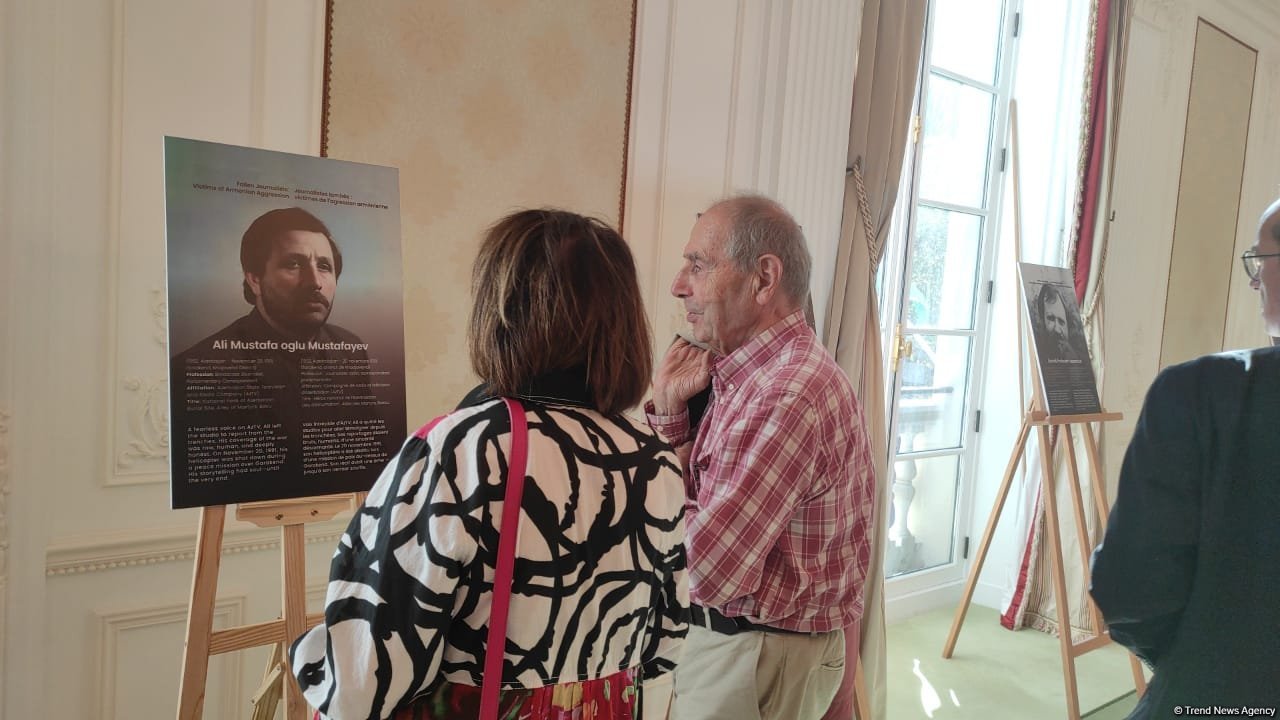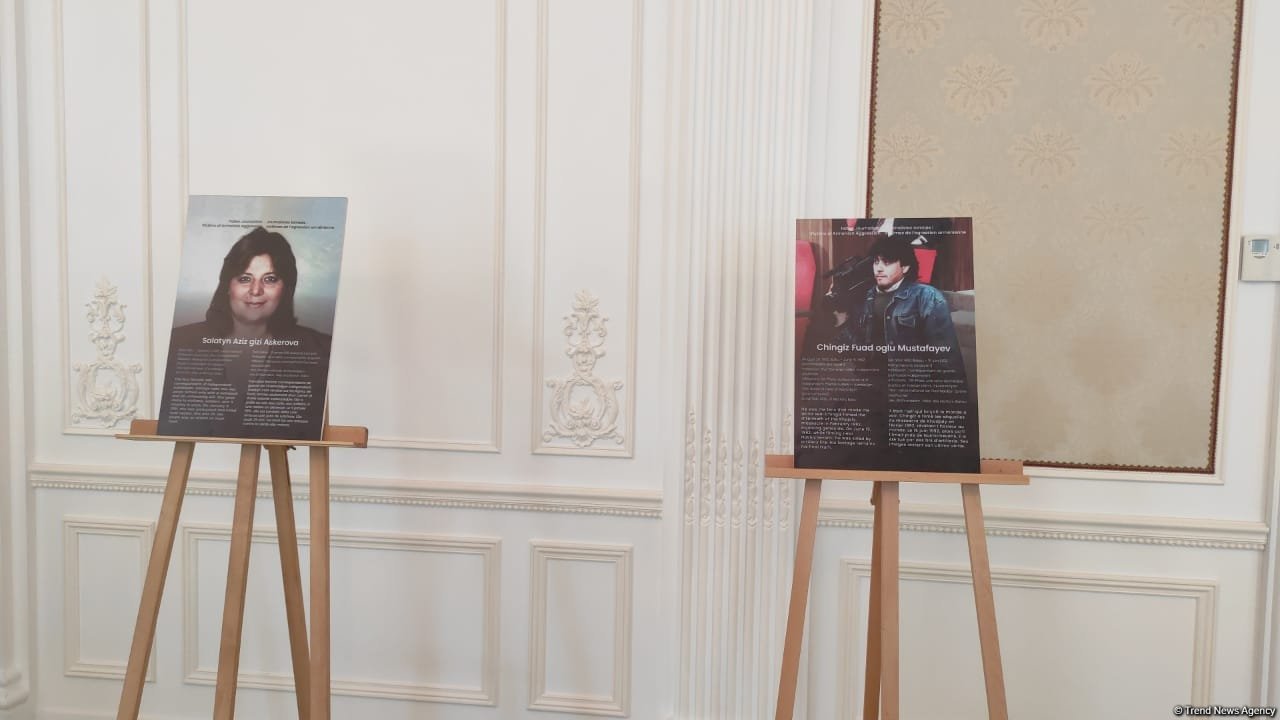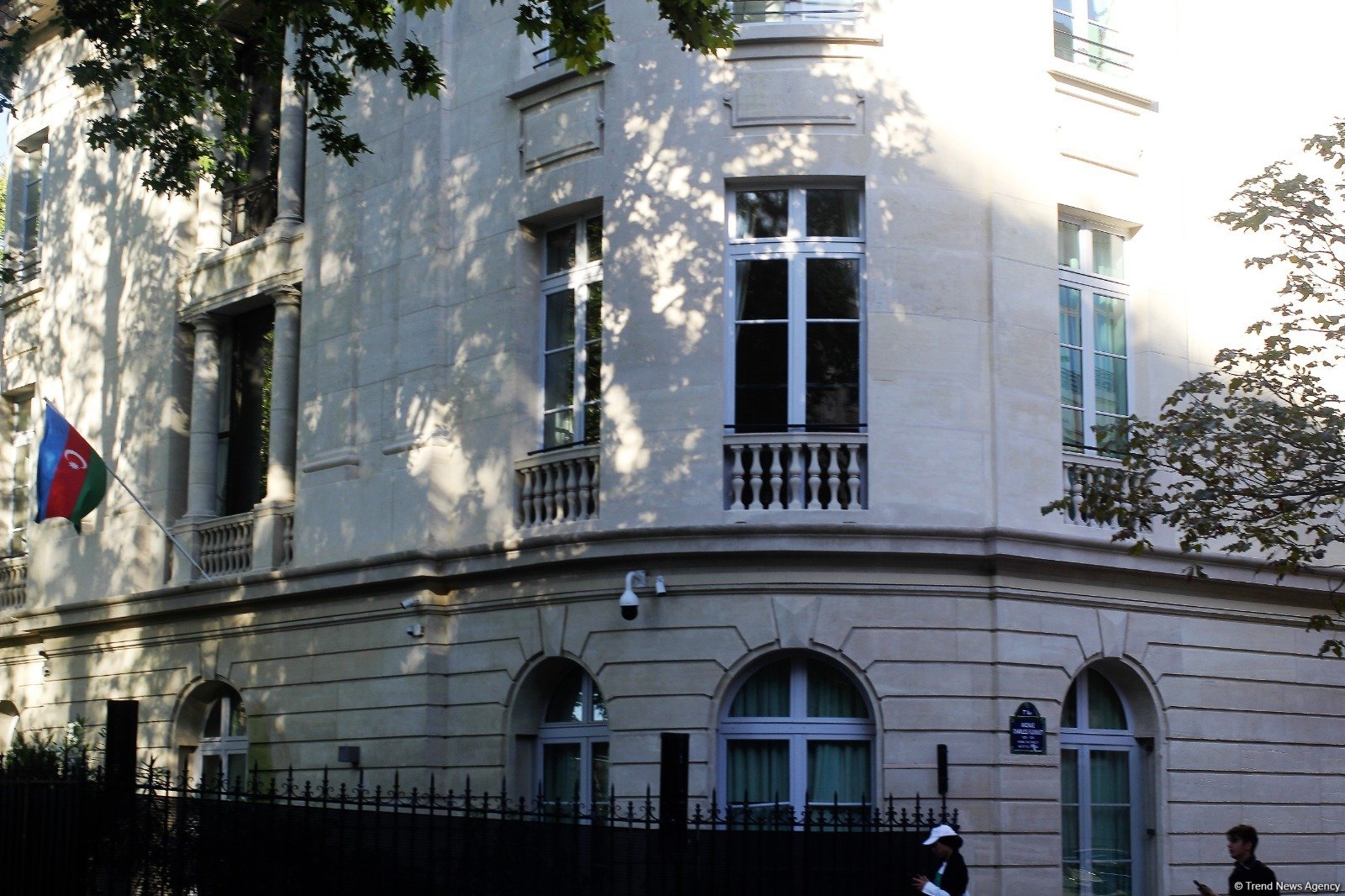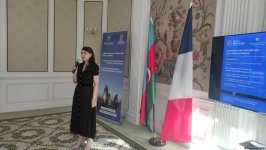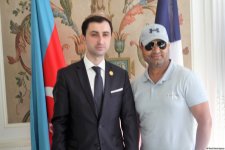PARIS, France, July 15. During the war, courageous Azerbaijani journalists risked their lives to keep the public informed about events unfolding in the region, said Nigar Huseynova, Advisor to the Azerbaijani Embassy in France, at an exhibition in Paris dedicated to the memory of Azerbaijani journalists who were brutally killed by Armenian forces during the First and Second Karabakh Wars, Trend reports.
The exhibition was organized by the Baku Network analytical center.
She explained that since the late 1980s, Azerbaijan has faced open territorial claims from Armenia and an ensuing undeclared war. Highlighting the severe impact of Armenian aggression, she noted that 20% of Azerbaijan’s territory was occupied, over 20,000 people were killed, and more than one million were displaced. Civilians suffered war crimes and genocide, cities were destroyed, and much of the country’s cultural and historical heritage was lost.
Huseynova emphasized that journalists were among the victims. She recalled Salatyn Asgarova, the first female journalist martyr, who was brutally killed by Armenian forces in 1991. She also mentioned Aly Mustafaev and Fakhraddin Shahbazov, who died that same year when a helicopter carrying high-ranking Azerbaijani officials was shot down over Karabakh. Additionally, she paid tribute to Chingiz Mustafayev, who played a key role in exposing the truth about the Khojaly genocide and was killed in 1992 while filming in Aghdam. More recently, in 2021, AzTV cameraman Siraj Abyshov and AZERTAC correspondent Maharram Ibrahimov were killed by landmines in Kalbajar - an ongoing threat to Azerbaijani civilians.
Huseynova reminded that international law protects civilians during conflict, including children, the elderly, medical personnel, and journalists. Under the First Additional Protocol to the Geneva Conventions, journalists are considered civilians and must be protected.
She stressed the vital role of information during crises, noting that these brave journalists risked their lives to keep society informed. They worked under difficult conditions—without the internet or social media, at a time when rapid information sharing was impossible, and during an information blockade on Azerbaijan. She expressed gratitude to the Baku Network Analytical Center for organizing this tribute to the fallen journalists.
Regarding the ongoing normalization process between Armenia and Azerbaijan, Huseynova said that it was initiated by Azerbaijan following the 44-day war in 2020, which ended the occupation of Azerbaijani territories and opened a new chapter for the region. For the first time in 30 years, in March this year, both Baku and Yerevan made hopeful statements about finalizing a peace agreement, and the two sides are gradually moving toward peace. She also highlighted the important meeting between Azerbaijani President Ilham Aliyev and Armenian Prime Minister Nikol Pashinyan in Abu Dhabi on July 10.
Huseynova stressed that the Azerbaijani people are eager for peace and expressed hope that the Armenian people share this desire - only then can peace be lasting and sustainable.
The Baku Network Analytical Center brought attention to the issue of Azerbaijani journalists killed as a result of Armenian aggression in Europe for the first time by organizing a series of events.
An exhibition was held in Paris where Baku Network showcased materials honoring these journalist martyrs.
The event took place at the Azerbaijani Cultural Center in Paris as part of Baku Network’s project titled “Analysis of Hybrid and Ideological Threats Against Azerbaijan”. The exhibition was organized with support from the State Support Agency for Non-Governmental Organizations of Azerbaijan and the Azerbaijani Embassy in France.
Booklets commemorating martyred journalists were distributed to visitors at the exhibition and to guests attending the presentation marking the 25th anniversary of Icherisheher’s inclusion on the UNESCO World Heritage List. The event was held at UNESCO headquarters during the 47th session of the World Heritage Committee.







